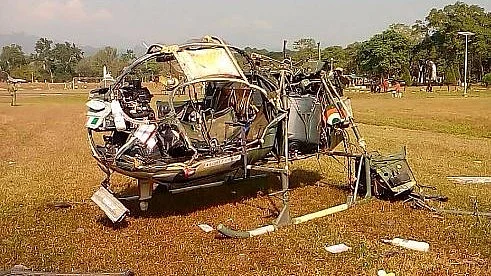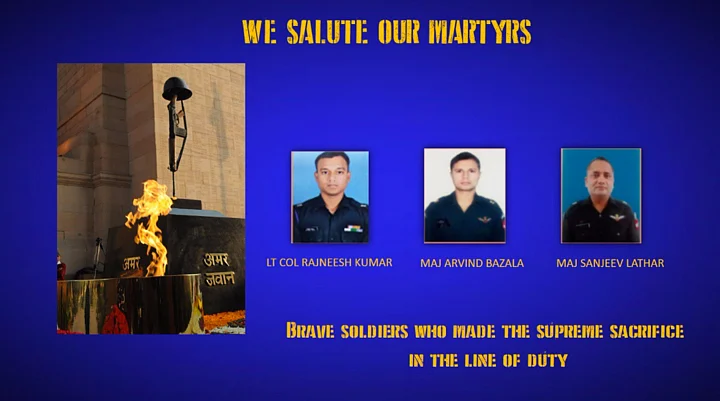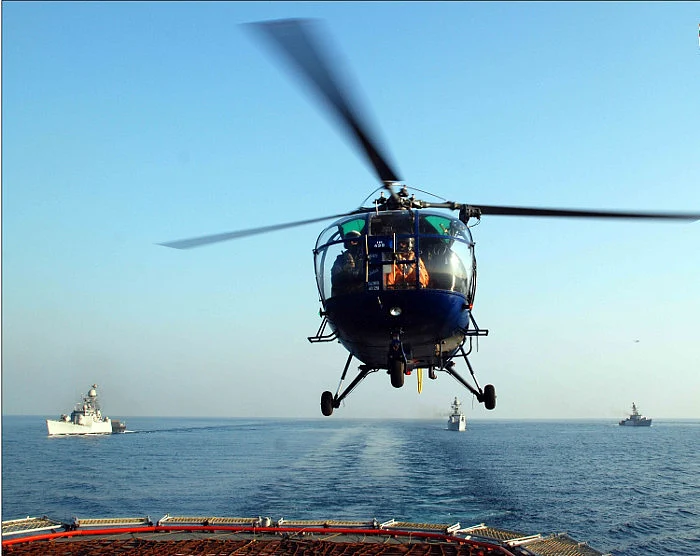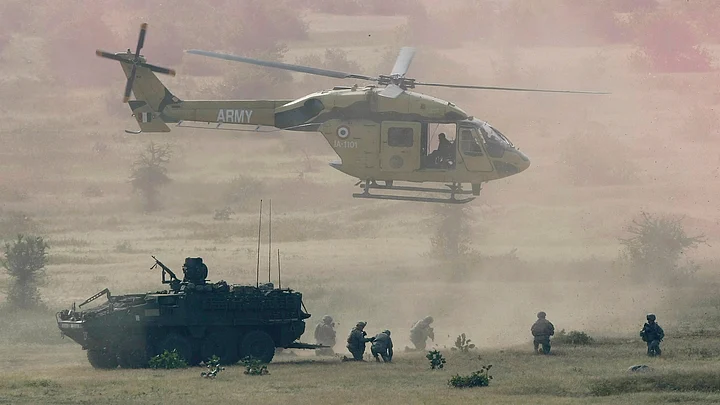(This story was originally published on 2 December 2016. It is being reposted in the wake of the Indian Army Cheetah helicopter crash near the Patnitop area in Udhampur, Jammu and Kashmir, on 21 September, in which two pilots lost their lives.)
A Cheetah (Lama) helicopter crashed at Sukna, West Bengal yesterday, 30 November 2016 during a routine sortie, killing three young officers of the Indian Army. A Junior Commissioned Officer is fighting for his life.
This comes a little over two years after another Indian Army Cheetah crashed near Bareilly, UP. There were three fatalities, again all officers.
A press release by Ministry of Defence, Government of India dated 28 April 2015 reveals that ‘during the last three years (2012-13, 2013-14 and 2014-15), six accidents have taken place involving Cheetah and Chetak helicopters of the Armed Forces in which nine defence personnel have died.’

Add three from the latest crash to this sad figure. In the Army alone, over 40 of these machines have crashed in the last two decades. Issues dogging the fleet comprise component failures, low reliability and structural failures, among others. These shortfalls have been repeatedly highlighted by the defence forces to the MoD.
Detailed accident statistics for this family of helicopters are not available to the media as it is shrouded in secrecy, typical of the military.
But having flown these machines extensively over my two decades-plus service in the whites, I can say with reasonable confidence that all pilots who have done time in the Indian Armed Forces know at least one person who has died in a Chetak/Cheetah crash. To me, that is as damning a statistic as any.
The same press release also goes on to state that ‘phasing out aircraft including helicopters and their replacement depends upon the national security/strategic objectives and operational requirements of the defence forces and is reviewed by the government from time to time. This is a continuous process.’
Sure. A continuous process with no start, end or defined process time? As early as 2007, then Defence Minister Mr AK Antony had gone on record to say that these vintage machines no longer meet the operational requirements of the armed forces and need to be replaced.
A decade and three failed acquisition programs later, we are still at square one. And the spate of accidents continue unabated.

Chetak and Cheetah
The Chetak (Alouette, SA 316B) and Cheetah (Lama, SA 315B) helicopters developed by Sud Aviation, manufactured by Aerospatiale and licence manufactured by Hindustan Aeronautics Limited (HAL) have been around in the Indian armed forces since the sixties.
These delightfully simple yet highly capable helicopters have been the mainstay of India’s military helicopter fleet for many decades. While Chetaks dominate the plains, Cheetahs have been operating from sea level to super high altitude posts in the Himalayan Glacier such as Sonam, Kumar, Amar, Jwala, etc. With helipads at altitudes over 20000 feet, Siachen Glacier is the highest battlefield in the world.
Operating at the fringes, both man and machine are subject to a treacherous cocktail of terrain and extreme climatic conditions. In the glacier, ‘air maintenance’ sorties typically start early in the day and wind up well before noon when the combination of turbulence, weather and extreme density altitudes preclude safe flying.

Chetak and Cheetah rollout at HAL is down to a trickle since hardly any new orders are forthcoming from the three services. (Photo Courtesy: Indian Navy)
On a good day, a typical Cheetah from the Indian Air Force’s ‘Siachen Pioneers’ unit may well fly 2-3 hours with 15-20 super high altitude landings per aircraft. The accumulated stresses can only be imagined. And there is no HUMS or FDR to track aircraft health.
Operating in these daunting conditions, this simple machine has missed the march of technology completely. Beyond the odd addition of a mission-related avionic LRU or replacement of an air-driven artificial horizon with an electrical one, these machines have endured with pretty much the same old muscle.
In an ingenious experiment, HAL successfully integrated the Turbomeca TM333 engine that powers the 5.5-ton Dhruv with the Cheetah - rechristened ‘Cheetal’ in its new avatar. While this gave a new lease of life to the aircraft with improved thermal margins, overall improvement in safety record is not notable as the causative factors were many.
The ‘Inconclusive’ Accident Reports
Numerous accident investigation boards have returned ‘inconclusive’ or ‘undetermined’ enquiry reports. While the Air Force & Army integrated a Flight Monitoring System (FMS) onto the Cheetah for exceedance monitoring, the Navy is yet to adopt even a rudimentary data/voice recording system to assist in crash data analysis or health monitoring.
This is an urgent requirement keeping in view the mounting number of accidents.
For reasons best known to the manufacturer, several critical parts of this helicopter, especially in the flight control chain, have an ‘on condition’ life cycle with no clear definition on how this ‘condition’ is to be determined at field level.
Further, addition of LRUs and modifications have brought about a slow upward creep in the aircraft’s basic weight and reduced access to critical components for visual inspections, particularly on the naval variant.
Chetak and Cheetah roll out at HAL is down to a trickle since hardly any new orders are forthcoming from the three services. HAL’s preoccupation with other more engaging, and lucrative projects such as the weapon-system integrated ALH (Rudra), Light Combat Helicopter (LCH) and Light Utility Helicopter (LUH) also has an indirect bearing on the quality of resources – human and material, that can be brought to bear on improving the state of affairs in Chetak/Cheetah production lines.
Not surprisingly, this line was nudged out to the Barrackpore division a few years ago, with consequent reduction in quality and quantity of aircraft being signaled out.
Given the reality of glacier operations, single-engined helicopters will continue to be relevant in the Army and IAF.
The indigenous Dhruv is filling a critical capability gap, but it cannot be the answer for multifarious tasks undertaken by light singles (As an example, the Dhruv may be able to carry much more but the sheer task of unloading all that cargo in the face of enemy fire can take a huge toll at 21,500 feet).

Absence of New and Safer Options
In the absence of new inductions, perhaps other short-term measures such as additional precautions, added checks, reduced maintenance intervals etc. need to be adopted to keep them flying safely.
Having flown a bit in the civilian offshore helicopter industry with many safety-critical checks and balances, I find it a cruel irony that the military has to operate these vintage Performance Class III machines over hostile terrain almost all the time.
The navy takes it a level higher, operating Chetaks deep into the sea without any flotation gear!
Here's one from my own collection.

Replacement of these helicopters need to be pushed higher up on the national agenda. The recent agreement inked between India & Russia to manufacture 200 Ka-226 light helicopters for the Indian armed forces comes as a ray of hope.
However, there is many a slip between cup and lip when it comes to such big ticket deals. Then again, there is the indigenous LUH project of HAL which recently flew its first prototype. There is a need to closely monitor timelines and product quality and it cannot be allowed to meander as another open-ended scheme.
Here’s hoping for a good outcome and no more lives lost. Just as you wouldn’t want to own a ‘Standard Herald’ in these times, the benefits of modern technology and improved safety should be made available to every uniformed soldier.
I have enjoyed every minute flown on both, the Alouette and the Lama and have immense respect for both machines. But let’s call time on dated technology and misplaced bravado.
The Alouette and Lama must go.
(Capt KP Sanjeev Kumar is a former navy test pilot and blogs at www.kaypius.com. He has flown over 24 types of fixed and rotary wing aircraft and holds a dual ATP rating on the Bell 412 & AW139 helicopters. 'Kaypius' as he is widely known in his circles, flies in the offshore oil & gas division of a leading helicopter services company. He can be reached at kipsake1@gmail.com. Views expressed in this article are personal.)
(At The Quint, we are answerable only to our audience. Play an active role in shaping our journalism by becoming a member. Because the truth is worth it.)
